School-Cultural class
  Chinese
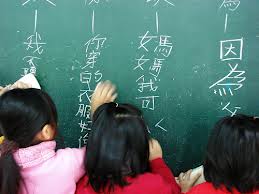
  At Shenging Shan students can study Putonghua or "common speech". This is because it can be used throughout the country as it is the standard language throughout China. This is more useful than some of the regional dialects which are only spoken in a given area.
  Generally speaking, learning a language is the key to having the most fulfilling experience in a foreign country. This is particularly true in China as it allows people to delve further into the culture.
  Long term students are especially encouraged to commit to learning Chinese; not only will it aid you in understanding more about Kung Fu. It can also be used to gain a HSK qualification, which is the internationally recognised certificate for Chinese language proficiency. Furthermore, this qualification is sought after by employers and education institutes throughout the world, therefore gaining a HSK qualification truly is an investment in your future.
  The Chinese classes will be divided into three groups in order to accommodate all abilities:
  Beginner
  Those who have no previous experience studying Chinese will start in the beginner group. The first three months of classes will focus on familiarising and reciting tones. Tones are the foundation of oral Chinese and it is extremely important to spend time studying them. Students in this category will cover such topics as: Introducing yourself, numbers, food, directions, the body, time and date.
  Intermediate
  Those who are already familiar with basic Chinese but know less than 1250 characters will be part of the Intermediate group. We suggest that these students purchase HSK level 3 or 4 textbooks as this will be the syllabus from which you will be working. During class time you will be working on grammar exercises and character writing, with the teacher frequently reviewing and correcting your answers.
  The vast majority of your education will be set outside of the classroom as the intermediate and advance students will be encouraged to constantly converse in Chinese. Upon request all the staff at the school will stop addressing you in English in order to simulate total language immersion.
  Students who are looking to take a HSK exam, can with the consent of the headmaster, opt to substitute three Kung Fu training sessions per week for personal study.
  Advanced
  These students will have already achieved a proficiency of 1250+ Chinese characters and are working towards HSK 5 or above. During lesson times you will be working from your textbook, completing grammar exercisers, writing essays and reviewing characters. All of your answers will be checked and corrected at the end of the class.
  Calligraphy
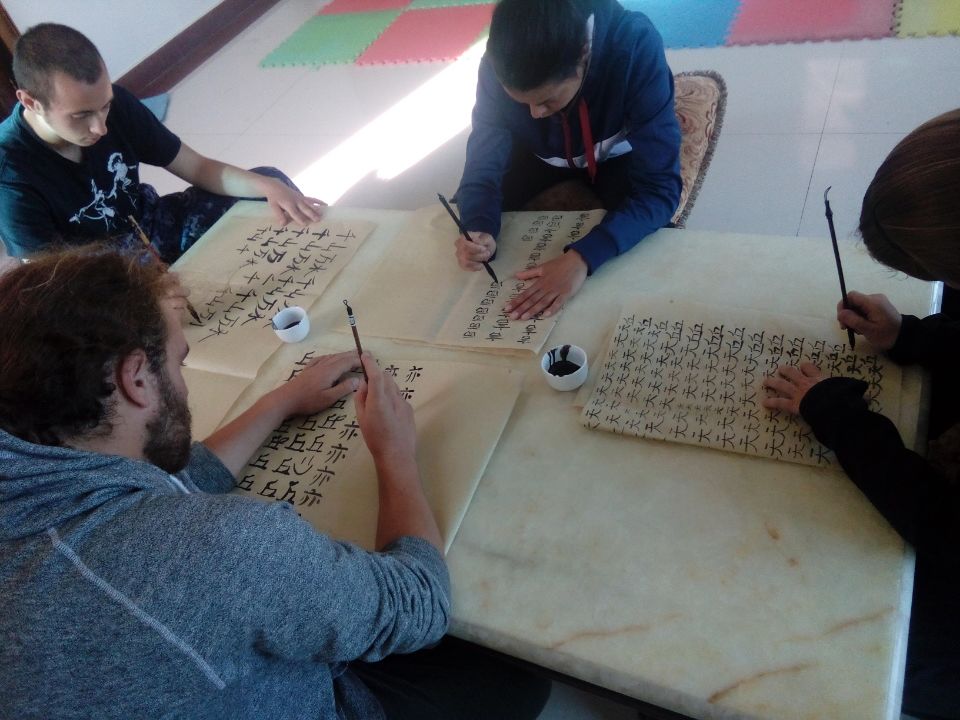
  It is said that calligraphy masters will control the flow of ‘Qi’ within oneself whilst simultaneously ‘letting go’ and allowing the flow of energy to carry through to the brush and onto the page. As calligraphy is a distinct form of self-expression, no two styles are the same, with each master’s work having its unique identity and character.
  The written Chinese characters become the physical expression of how the master has focused their mind and energized their Qi is a manifestation of how their energy flows onto the page.

  At Shenjing Shan student can learn this ancient art form from a true Master. The students will first learn the basic brush strokes and then move on to characters. With dedicated practice students will be able to create their own works of art.
  Massage
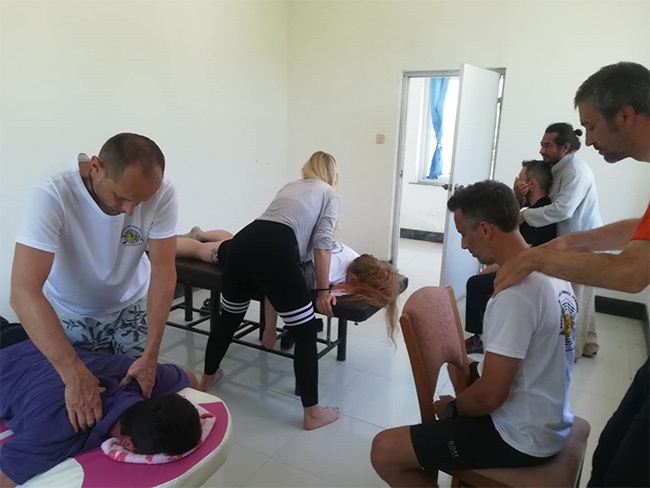
  Chinese massage is an integral part of Traditional Chinese Medicine(TCM). Some Chinese scholars say that massage dates back to 2700 BC and was used in conjunction with acupuncture to cure physical ailments.
  The governing principle of Chinese massage is, if a person is experiencing pain or discomfort it is due to the inability of Qi to flow freely. Therefore physical tension must be released through the stimulation of certain points along the ‘Meridian Lines’ so that the Qi is able to flow. Once your energy is no longer blocked, the pain and discomfort should begin to pass and your body's health will return to normal.
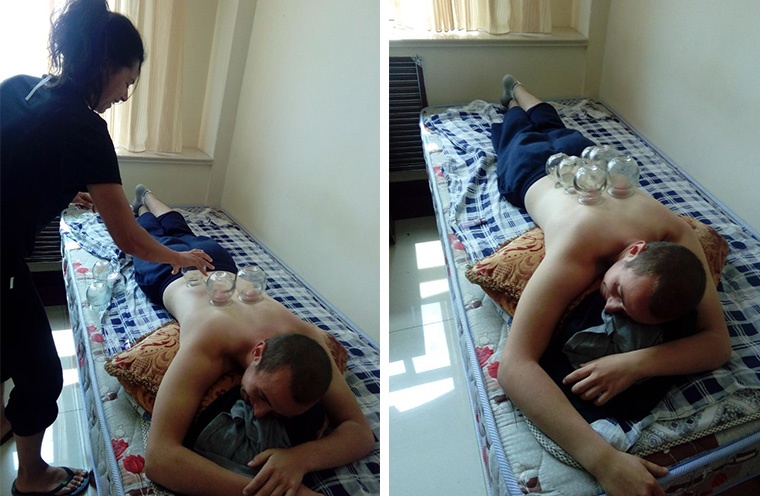
  During class time, Master Qu will teach his students Chinese massage theory, as well as allowing the students to explore the practical side of this healing art. Furthermore, students will also learn acupuncture points and how to heal different parts of the body such as the knees. Finally, as training is intense, massage will help the body with its recovery progress and help to keep students healthy.
  Acupuncture
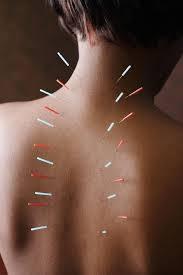
  Acupuncture has a recorded history dating back 2,000 years although some think that it goes back even further to approximately 4,000 years ago.
  It was originally developed by workers in the fields; they would use sharp stones (known as bian stones.) to rub certain parts of the body to cure ailments. Over the years as Chinese society developed these stones were discarded and replaced by stone, pottery, bronze, silver or gold needles and eventually the steel needles of modern day acupuncture.
  The needles penetrate the skin at specific points. These points are known collectively as ‘Acupuncture or Acupressure Points’ and can be found at certain points of the body along that are known as the ‘Meridian Lines’, although there are some which are not found on any of the meridians and are known as ‘Extraordinary Points’.
  Moxibustion is another variation of acupuncture whereby certain herbs are burnt over but not touching the acupuncture points and the essence of the herb penetrates the skin via the pores.
  Cooking
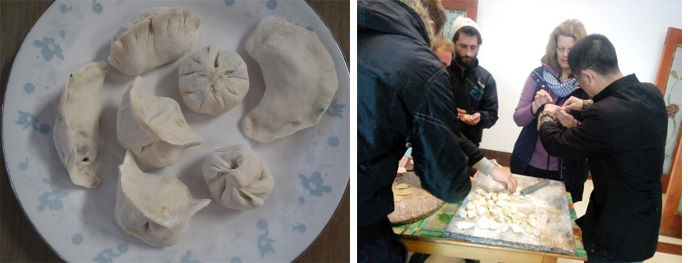
  We believe that Chinese cuisine is one of the most important elements of Chinese culture. Therefore we think it is equally important that our students begin to embrace this rich and unique part of China’s heritage.
  Our cook comes from the quiet village which sits outside of the temple grounds. Using the freshest ingredients, she uses the recipes which have been passed down through her family, from generation to generation.
  Those students who wish to learn how to make the dishes which have characterised the Chinese countryside for hundreds of years can do so by assisting the cook in the kitchen every dinner time.
  Daoism
  The system of the Dao is the essence of everything that exists in the universe and a way of living in harmony with the surrounding environment. It is the idea of accepting and yielding; seeking a balanced relationship between human beings and the natural world. The Dao is most clearly represented by the Yin-Yang symbol. It highlights the unity of opposites within the natural world, such as the sun and the moon, which follow predetermined, unchanging paths both similar yet diametric opposites.
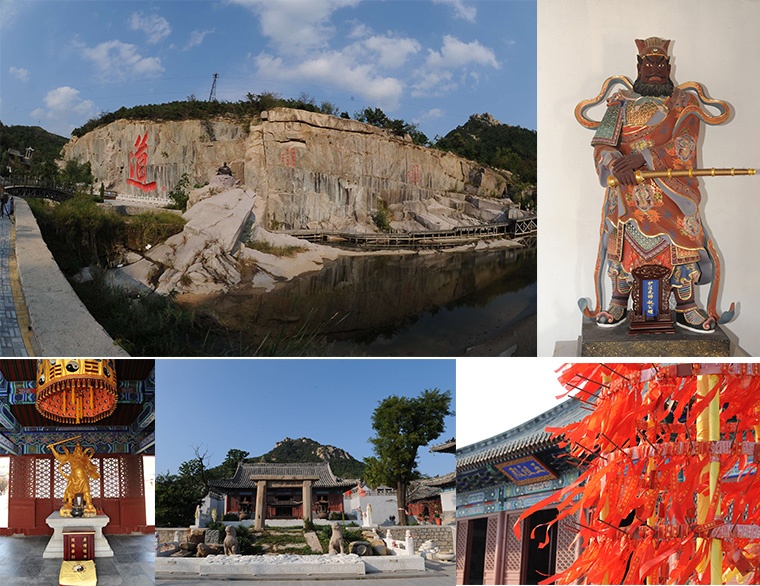
  Daoist thought, for example the concepts of harmony and balance influences every element of Chinese culture. This philosophy can be seen in cooking, Kung Fu and even Traditional Chinese Medicine, therefore whilst at Shenjing Shan students have the opportunity to learn more about Daoism.
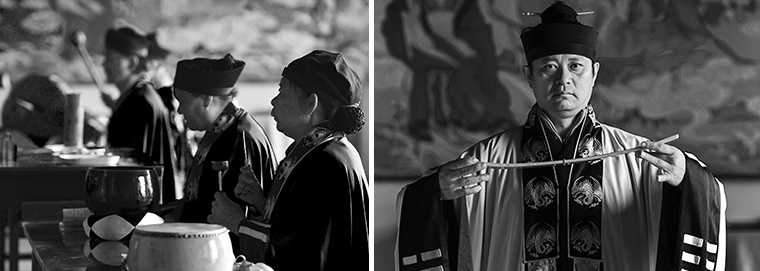
  Students who attend Daoism class will be introduced and asked to explore the following: The origins of Daoism, the lives of Laozi and Zhuangzi and their works, personal interpretations of Daoist works, speak with the monks in the temple (Advanced Chinese language students only).
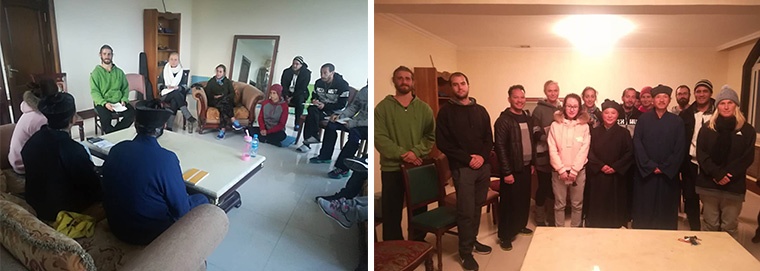
  Studying Daoism here is particularly advantageous as we are situated on temple grounds. This is to say that we are surrounded by an abundance of knowledge and culture, and for those interested in this field it is a ‘can’t miss’ opportunity to lean about China’s most famous indigenous religion.
